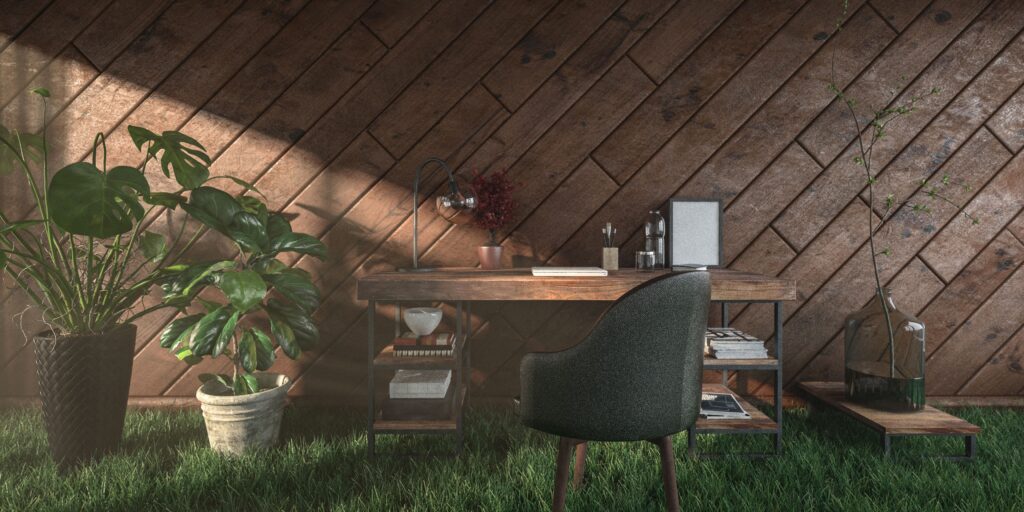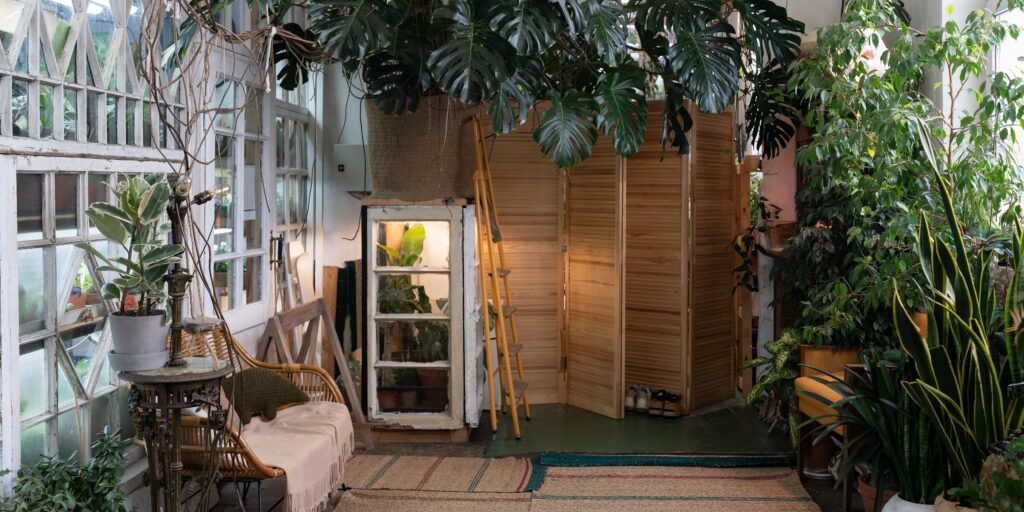A serious problem that has a wide range of effects on the world is global warming. Climate change has resulted from the over use of fossil fuels and the generation of greenhouse gases, which in turn has produced a number of environmental issues. Therefore, it is crucial for both individuals and companies to contribute to lowering their carbon footprint. Interior design that is sustainable is one approach to achieve this.
Utilizing environmentally friendly components and designs that save energy, cut down on waste and emissions, and support the preservation of natural resources is part of sustainable interior design. Here are some ways that environmentally friendly interior design might reduce global warming.

WAYS TO COMBAT GLOBAL WARMING
Use of eco-friendly materials
Utilizing ecologically friendly elements that are both safe for people and the environment is a key component of sustainable interior design. The discharge of hazardous chemicals into the atmosphere can be decreased, for instance, by utilizing furniture produced from recyclable materials and eco-friendly paints that release fewer volatile organic compounds (VOCs). This not only encourages a healthy lifestyle environment but also aids in lowering greenhouse gas emissions.
Energy-efficient HVAC systems
In both residential and commercial buildings, heating, ventilation, and air conditioning (HVAC) systems are one of the major energy consumers. Traditional HVAC systems are a significant source of energy waste and greenhouse gas emissions, which contribute to global warming. HVAC systems that are energy-efficient can help you conserve energy, lower your carbon footprint, and save money. We shall look at the advantages of energy-efficient HVAC systems in this article.
First, it’s crucial to comprehend how conventional HVAC systems function. HVAC systems are made to keep a building at a specific temperature. The system is under the direction of the thermostat, which maintains the temperature within the appropriate range.
HVAC systems that use less energy operate differently. They control the temperature with sophisticated technology and turn off when not in use. These devices are made to use less energy while yet keeping the correct temperature. HVAC systems that are energy-efficient use less energy to cool or heat a space, which lowers electricity costs and greenhouse gas emissions.
Energy-efficient HVAC systems also frequently use ecologically friendly refrigerants in their construction. Refrigerants used in conventional HVAC systems increase global warming. Refrigerants used in energy-efficient systems have significantly less of an influence on the environment.
To sum up, energy-efficient HVAC systems are crucial for cutting down on energy use and halting global warming. Smart technology is used by these systems to control temperature and lower energy use, saving users money on electricity costs and lowering greenhouse gas emissions. Energy-efficient HVAC systems have programmable thermostats and ecologically friendly refrigerants as major components. Additionally, they raise air quality, creating better conditions for living and working. To lower their carbon footprint and save money, people and companies should think about investing in energy-efficient HVAC systems.
BENEFITS OF SUSTAINABLE INTERIOR DESIGN

A developing trend in interior design is designing environments that are practical, visually beautiful, and environmentally responsible. By establishing a greener, more energy-efficient, and sustainable living or working environment, the goal is to lessen the impact of buildings on the environment.
Reduces Carbon Footprint: Sustainable interior design places a strong emphasis on the use of products and methods that cut down on carbon emissions. Buildings have a smaller negative environmental impact when using sustainable materials like recycled plastic, bamboo, and recovered wood. Sustainable interior design helps to lessen the consequences of climate change and global warming by lowering carbon emissions.
Enhances Indoor Air Quality: Conventional interior design frequently makes use of synthetic materials and chemical-based products, which have the potential to emit toxic chemicals and other pollutants into the air. On the other side, sustainable interior design makes use of organic and non-toxic materials that enhance indoor air quality. For instance, employing indoor plants, natural ventilation, and low VOC (Volatile Organic Compounds) paint can help purify the air and lower the risk of respiratory problems.
Promotes Energy Efficiency: To reduce energy consumption, sustainable interior design incorporates energy-saving appliances, lighting, and HVAC systems. The amount of energy required to light, heat, or cool a building can be considerably decreased by using energy-efficient fixtures and bulbs, smart thermostats, and natural illumination. This lowers greenhouse gas emissions and lowers energy expenses while also saving money.
Sustainable interior design supports healthy indoor environments by utilizing products that are free of toxic chemicals and other harmful substances. This fosters productivity and wellbeing by making the environment safer and cozier. Biophilic design components, including indoor plants and natural light, that have been demonstrated to lower stress levels and enhance cognitive performance, can also be incorporated into sustainable interior design.
Increases Property Value: Sustainable interior design is a new style that is gaining popularity among consumers and companies. Sustainable interior design elements can raise a building’s value and marketability. People are willing to pay extra for homes that stress sustainability and eco-friendliness as they grow more ecologically aware.
An innovative strategy that is vital to reducing the effects of global warming is sustainable interior design. Sustainable interior design can help to minimize carbon footprint, reduce greenhouse gas emissions, and encourage a more pleasant and healthy living or working environment by using eco-friendly materials, consuming less energy, and enhancing indoor air quality. Due to its many advantages for the environment and building inhabitants, it is a design philosophy that is quickly gaining appeal. Sustainable interior design is anticipated to become a crucial component of building design and construction as more people become aware of the significance of environmental sustainability, paving the way for a cleaner and greener future.
